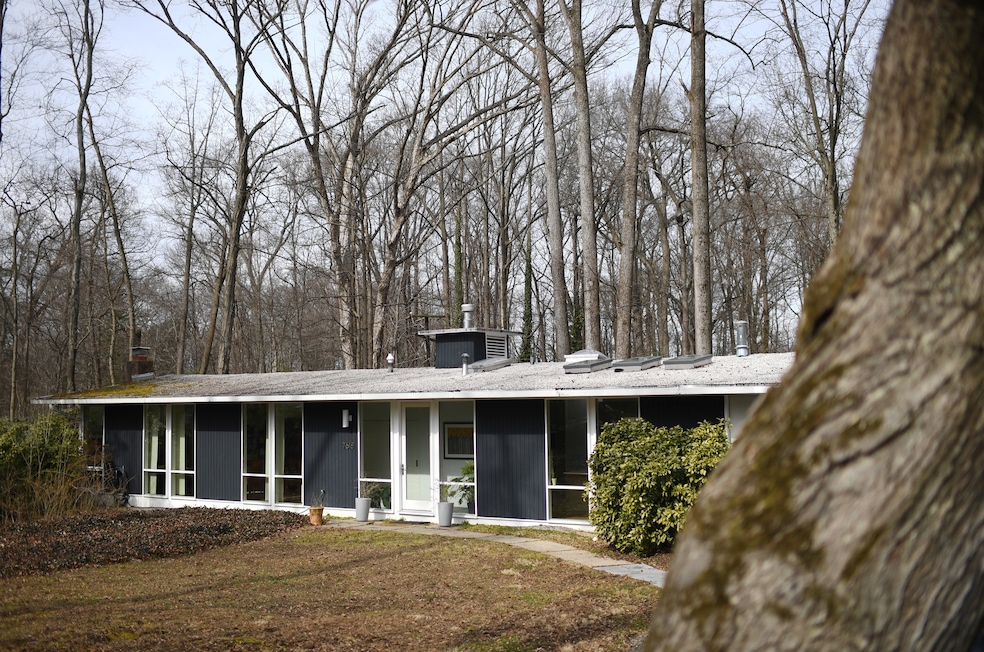After World War II, residential design, like much of the globe, was in flux.
Perhaps in reaction to the violence and sweeping loss experienced from 1939 to 1945, architects and designers began reconsidering what homes and the furniture inside them looked like, and how they shaped the relationships between residents and their surrounding communities and environments. The resulting designs — some from well-known modernist names including Walter Gropius, Ludwig Mies van der Rohe, Paul R. Williams and Charles and Ray Eames — remain popular, flooding social media feeds and inspiring design obsessives.
The term "midcentury modern'" didn’t crystalize until decades later. It's largely attributed to author Cara Greenberg, who penned “Mid-Century Modern: Furniture of the 1950s” in 1984.
The style flourished across the world in the 1950s and ‘60s as “the design of our homes shifted radically in response to a more relaxed and informal way of living, with separate dining rooms often giving way to dedicated zones within a multilayered but open plan living space, while kitchens became increasingly important and ergonomically designed, even if they still remained spaces in their own right,” Dominic Bradbury, an author of several books on midcentury modern design, said via email.
Design connects to the outdoors

In addition to their open-plan design, which offered appealing adaptability, these often steel- or wood-framed houses ran low to the ground, rambling along one story, sometimes two. Sleek, flat roofs capped the homes, and entire walls of floor-to-ceiling windows flooded the interiors with daylight, also easing access to the outdoors.
A connection to the outdoors became another defining element of the style. “Outdoor rooms and fresh air escapes became more and more important and another focal point for architects and designers during the midcentury period,” said Bradbury, whose titles include “Mid-Century Modern Designers” and “Atlas of Mid-Century Modern Houses.” “Conversation pits, feature fireplaces and dramatic Space Age lighting were also familiar features of American midcentury houses designed by Eero Saarinen, Craig Ellwood, Richard Neutra, Pierre Koenig and others.”
CoStar reporter Matthew Mann explores a midcentury modern enclave in Hollin Hills, Virginia
'There's just a simplicity to it'
Compared to some popular 19th-century styles—think Victorian homes or Tudor revival residences—midcentury modern spaces embraced a pared-back aesthetic free of ornament.
“There’s just a simplicity to it,” interior designer Karen Nepacena said of the style. Nepacena, who lives in a subset of midcentury modern homes known as an atomic ranch, runs Destination Eichler, a studio that focuses on helping clients achieve a modernist aesthetic.

On one hand, that simplicity called toward accessibility; some modernist designers envisioned these midcentury dwellings as affordable starter homes, with developers building entire midcentury modern neighborhoods across the United States, such as Hollin Hills in Alexandria, Virginia. But that unfussy simplicity also helped foster a relaxed and welcoming character, Bradbury noted.
“These were houses designed and built in a spirit of optimism, combining architectural innovations with a playful, engaging attitude to interiors, as well as thoughtful landscaping,” he explained. “There is an engaging character to midcentury homes that comes from spaces that are open, informal and full of warmth, as well as light, which helps to make them so appealing.”

For some homebuyers, midcentury modern residences remain just as compelling today as they were more than seven decades ago. The flexible layout and efficient design retain their appeal, even as the pool of midcentury homes on the market narrows as the structures age and are demolished. Surviving homes, however, can present buyers with some challenges in the form of upgrades, such as appliances or mechanical systems, or costly renovations of insulation, windows, and roof repairs.
“One of the biggest challenges lies in making these kinds of upgrades while holding onto the original midcentury character that makes these homes so special in the first place,” Bradbury said.
But for midcentury fans, those demands can be well worth the effort. They date to “a time when modern living as we know it today was really pioneered and defined, so there is a ‘contemporary’ quality to many midcentury homes that makes them feel like familiar friends,” Bradbury said.
